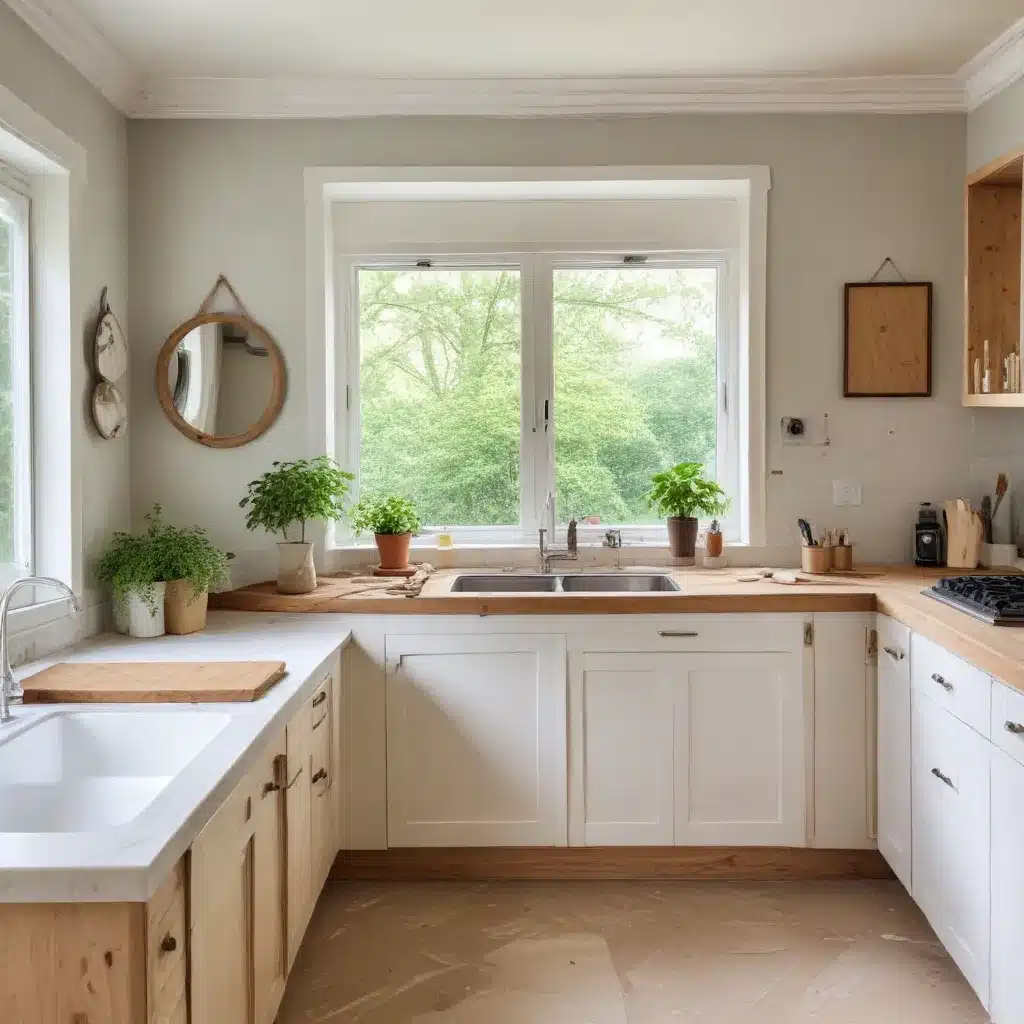
Eco-Friendly Home Makeovers: DIY Sustainable Renovation Tips
Eager to transform your home into an eco-friendly oasis but unsure where to start? As an experienced home improvement consultant, I’m here to guide you through the world of sustainable renovations – from budget-friendly materials to energy-saving strategies and family-friendly designs. Get ready to create a beautiful, functional, and environmentally-conscious living space.
Renewable Building Materials
The foundation of any eco-friendly home makeover lies in the materials you choose. Opt for renewable resources that have a lower environmental impact than traditional construction supplies. Bamboo, for example, is a fast-growing grass that makes for durable flooring, cabinetry, and furniture. Cork is another versatile material harvested from the bark of cork oak trees – it’s naturally antimicrobial, soft underfoot, and an excellent insulator.
When it comes to insulation, consider recycled denim or sheep’s wool rather than fiberglass. These natural materials not only provide superior thermal and acoustic insulation but also emit zero volatile organic compounds (VOCs). For wall finishes, look for zero-VOC paints in a range of earthy, nature-inspired hues.
Energy-Efficient Appliances
Upgrading to energy-efficient appliances is a surefire way to reduce your home’s environmental footprint and lower utility bills in the long run. When shopping for new refrigerators, ovens, washers, and dryers, look for the ENERGY STAR® label, which indicates they meet strict energy-efficiency guidelines.
Induction cooktops, for instance, use electromagnetic technology to heat pots and pans directly, rather than heating the entire surface. This makes them up to 50% more efficient than traditional electric or gas ranges. Similarly, heat pump water heaters can be 2-3 times more efficient than standard electric or gas models.
Reclaimed and Recycled Supplies
One person’s trash is another’s treasure when it comes to sustainable renovations. Scour salvage yards, thrift stores, and online marketplaces for reclaimed wood, vintage light fixtures, and repurposed hardware. Not only will these finds add unique character to your space, but they also divert materials from landfills.
For a cohesive look, consider applying a fresh coat of paint or stain to reclaimed items. You can even transform older furniture into functional pieces, like turning an antique dresser into a vanity or upcycling a wooden door into a sliding barn door.
Maximizing Energy Efficiency
Once you’ve sourced your eco-friendly materials, it’s time to tackle energy-saving strategies that will keep your home comfortable and efficient for years to come.
Insulation and Weatherproofing
Proper insulation and weatherproofing are critical for minimizing heat loss (or gain) and reducing your reliance on energy-guzzling heating and cooling systems. Aim for an R-value of at least R-30 in your attic and R-13 to R-23 in your walls, depending on your climate.
Seal any air leaks around windows, doors, and electrical outlets with caulk or weatherstripping. Consider upgrading to double-glazed or triple-glazed windows with low-E coatings to increase thermal performance.
Renewable Energy Sources
If your budget allows, incorporate renewable energy sources like solar panels or a geothermal heat pump into your renovation plans. These systems can dramatically reduce your reliance on fossil fuels and, in some cases, even allow you to sell excess energy back to the grid.
For a more affordable option, explore solar water heaters, which use the sun’s energy to heat your home’s water supply. These systems can cut your water heating costs by 50% to 80%.
Smart Home Technology
Integrate smart home technology throughout your renovation to further enhance energy efficiency. Programmable thermostats, for instance, can automatically adjust temperatures based on your family’s schedule, while smart lighting systems allow you to control illumination remotely or set schedules.
Sustainable Design Strategies
Beyond energy-efficient upgrades, your home’s overall design can significantly impact its environmental footprint. Prioritize minimalist and multifunctional layouts to reduce wasted space and resources.
Minimalist and Multifunctional Layouts
Open-concept floor plans, for example, often require less square footage than traditional, compartmentalized designs. Multipurpose rooms and convertible furniture can also help you maximize your living space while minimizing the need for additional construction.
Natural Lighting and Ventilation
Harness the power of the sun by strategically placing large windows and skylights to bring in abundant natural light. This not only reduces your reliance on artificial lighting but also has a positive impact on your mental wellbeing. Pair these features with operable windows and ceiling fans to promote natural airflow and minimize the need for air conditioning.
Eco-Friendly Landscaping
Incorporate native, drought-tolerant plants into your outdoor spaces to reduce water consumption and maintenance requirements. Rain gardens and permeable paving can also help manage stormwater runoff and reduce the strain on municipal sewage systems.
Waste Reduction and Recycling
Sustainable renovations don’t end with the construction phase – they also involve thoughtful waste management and recycling practices.
Composting and Waste Management
Set up a composting system to divert organic waste from landfills and create nutrient-rich soil for your garden. Designate clearly labeled recycling bins throughout your home to encourage family members to sort their waste properly.
Upcycling and Repurposing
Get creative by upcycling or repurposing existing materials whenever possible. That old dresser could become a vanity, and those worn-out t-shirts could be transformed into household cleaning rags.
Water Conservation Techniques
Install low-flow faucets, showerheads, and toilets to reduce water consumption. Consider greywater systems, which reuse sink, shower, and washing machine water for landscape irrigation.
Conclusion
Embarking on an eco-friendly home makeover may seem daunting, but with the right strategies and a little creativity, you can transform your living space into a sustainable oasis. By prioritizing renewable materials, energy-efficient upgrades, and thoughtful design, you’ll not only reduce your environmental impact but also create a comfortable, functional, and visually appealing home for you and your family.
For more inspiration and resources, be sure to visit Reluctant Renovator – your one-stop-shop for all things home improvement. Happy renovating!



